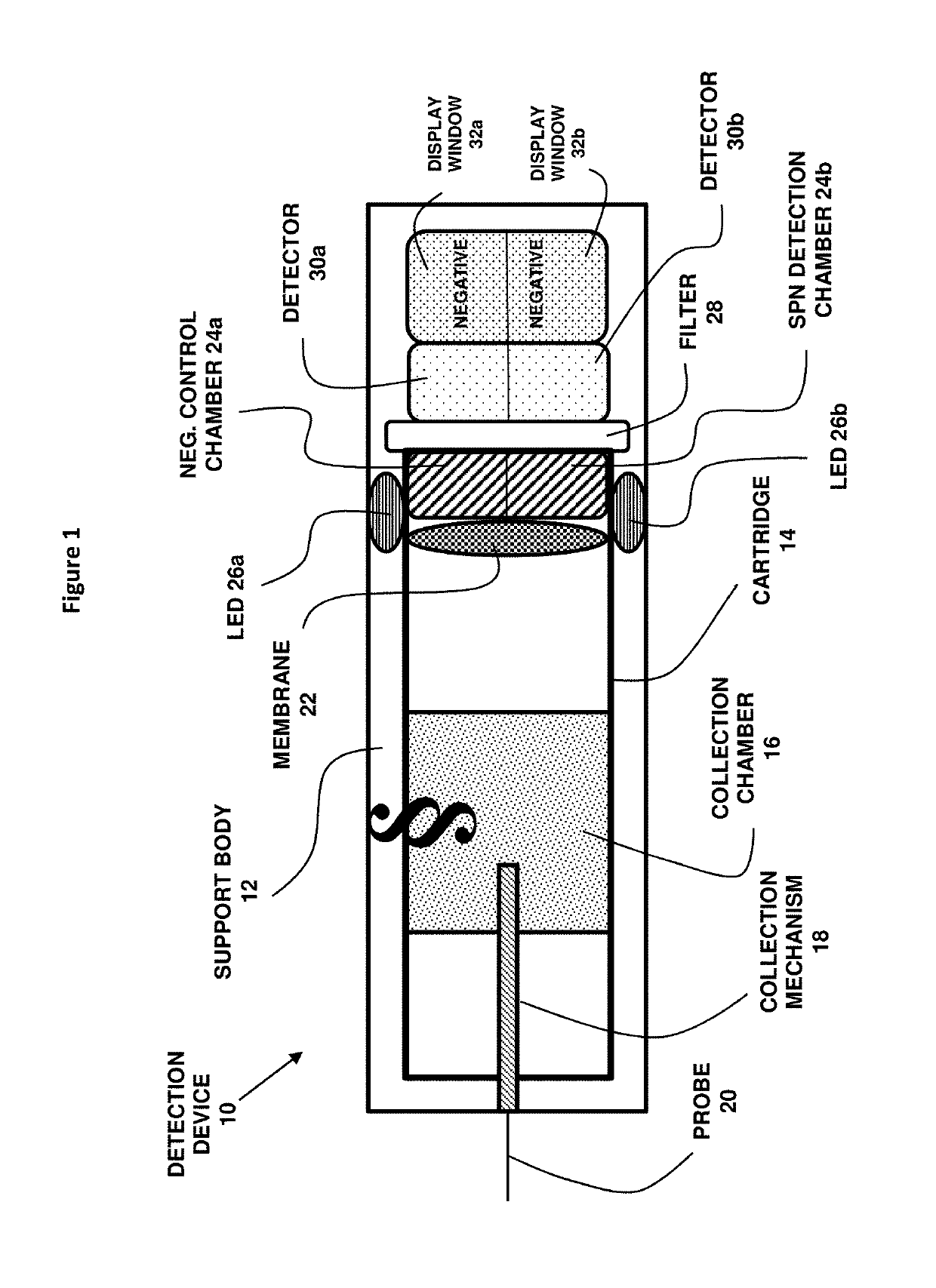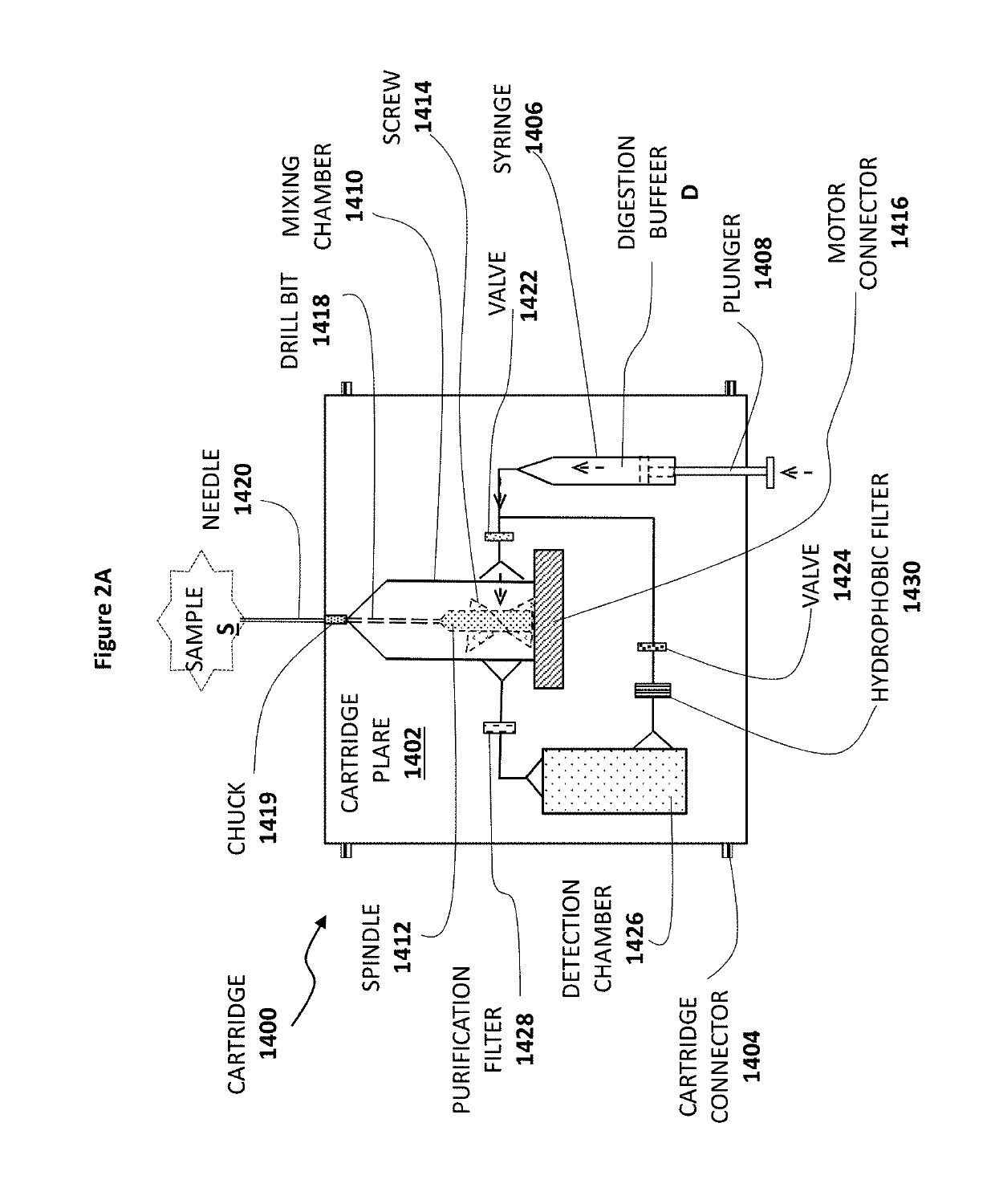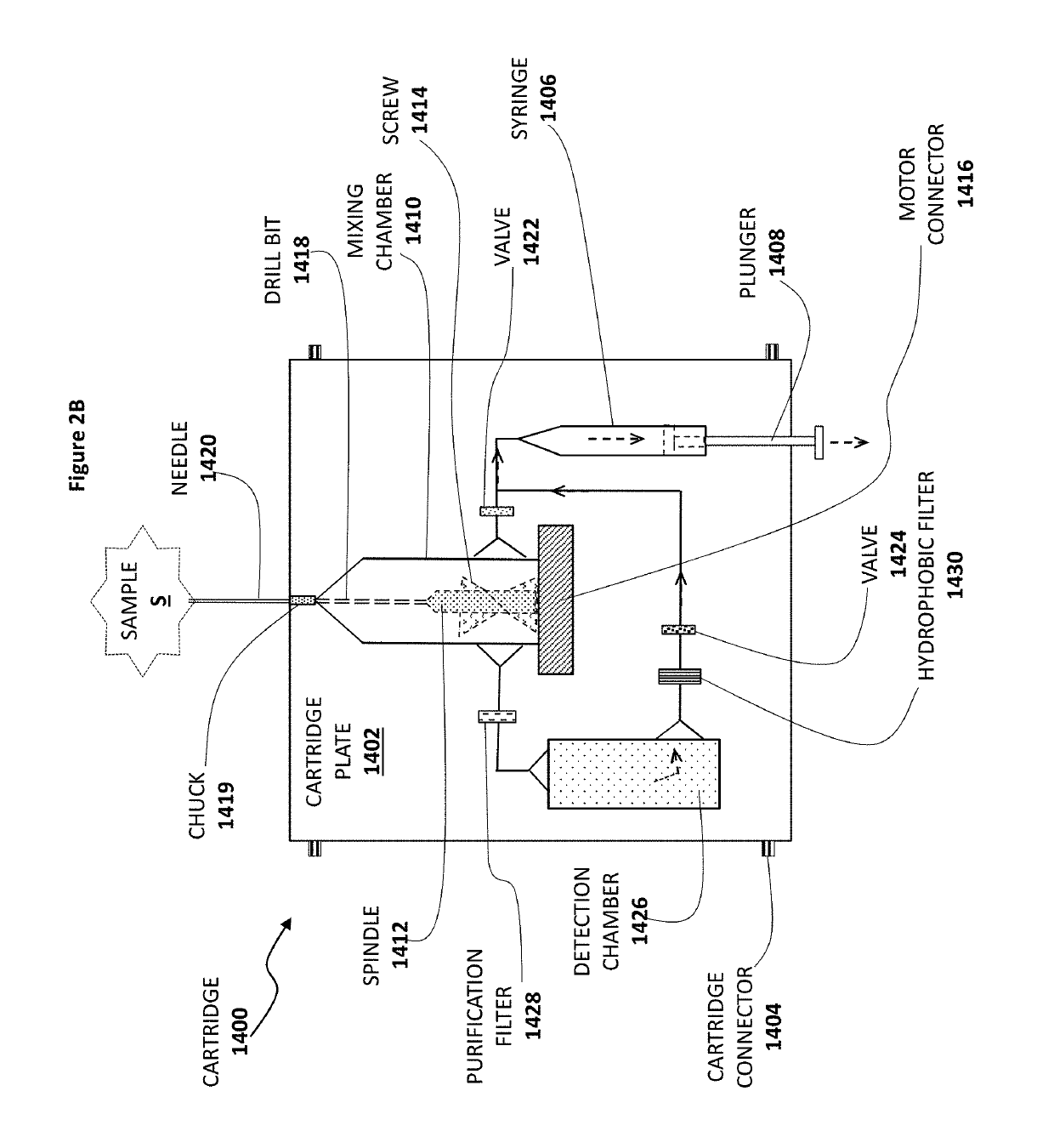Allergen detection
a technology for allergen detection and detection methods, applied in the field of allergen detection methods, devices and molecules, can solve the problems of unable to assess the true allergen content of food, limited detection specificity, and high probability of false negatives in the analysis of solid food products
- Summary
- Abstract
- Description
- Claims
- Application Information
AI Technical Summary
Benefits of technology
Problems solved by technology
Method used
Image
Examples
example 1
[0304]One embodiment of the detection system of the present invention is shown in FIG. 1.
[0305]The digital detection device comprises a food collection mechanism, a drill or macerating member, an optional pump or vacuum for facilitating flow through, one or more excitation means (e.g., an LED), one or more filters to receive the emitted light from the excitation means, a readout mechanism and a user interface screen.
[0306]The cartridges or disposable or interchangeable portion of the device may comprise one or more collection probes with optional covers, the allergen specific cartridge, one or more excitation means (e.g., LED lights) and one or more filters.
example 2
Aptamers as Signaling Polynucleotides
[0307]In this proof-of-concept example, two previously known aptamer sequences were used to design three different signaling polynucleotides. An aptamer against the Ara h 1 protein allergen is described by Tran et al. in Selection of aptamers against Ara h 1 protein for FO-SPR biosensing of peanut allergens in food matrices. Biosensors and Bioelectronics, 2013, 43, 245-251 (incorporated herein by reference in entirety). The sequence of this aptamer is shown below.
[0308]
(SEQ ID NO: 1)5′CGCACATTCCGCTTCTACCGGGGGGGTCGAGCTGAGTGGATGCGAATCTGTGGGTGGGCCGTAAGTCCGTGTGTGCGAA3′
[0309]The original aptamer of SEQ ID NO: 1 was modified to add a 5′-T residue to improve the functioning of the fluorophore-quencher pair. Fluorescein was then linked to the 5′-T residue as shown below.
[0310]
(SEQ ID NO: 2)5′FluoresceinTCGCACATTCCGCTTCTACCGGGGGGGTCGAGCTGAGTGGATGCGAATCTGTGGGTGGGCCGTAAGTCCGTGTGTGCGAA3′
[0311]A 9-nucleotide linker with a 3″-DABCYL quencher was designed as sh...
example 3
for Obtaining Fluorescence Readings for Hairpin-Type Signaling Polynucleotides in Detection of a Target Molecule
[0327]This example describes one procedure for obtaining fluorescence readings and thereby determining the effectiveness of signaling polynucleotides in identifying and quantifying the presence of a molecular target such as a protein. This procedure is useful for detection of hairpin-type signaling polynucleotides such as SPN-E as well as dimeric signaling polynucleotides such as SPN-E* and SPN-A*, for example.
[0328]The protein of interest is diluted to an appropriate concentration in double-distilled water. The signaling polynucleotide is diluted to 200 μM in 10 mM TRIS-HCl, pH 7.5. This solution is heated to 99° C. for 3 minutes and then cooled to room temperature. As an alternative to TRIS-HCl, PBS or tris(hydroxyamino)methane-glycine-potassium buffer (TGK buffer) at pH 8.3 may be used. The protein solution is added to the wells of a 96-well plate and then the signaling...
PUM
| Property | Measurement | Unit |
|---|---|---|
| volume | aaaaa | aaaaa |
| length | aaaaa | aaaaa |
| volume | aaaaa | aaaaa |
Abstract
Description
Claims
Application Information
 Login to View More
Login to View More - R&D
- Intellectual Property
- Life Sciences
- Materials
- Tech Scout
- Unparalleled Data Quality
- Higher Quality Content
- 60% Fewer Hallucinations
Browse by: Latest US Patents, China's latest patents, Technical Efficacy Thesaurus, Application Domain, Technology Topic, Popular Technical Reports.
© 2025 PatSnap. All rights reserved.Legal|Privacy policy|Modern Slavery Act Transparency Statement|Sitemap|About US| Contact US: help@patsnap.com



